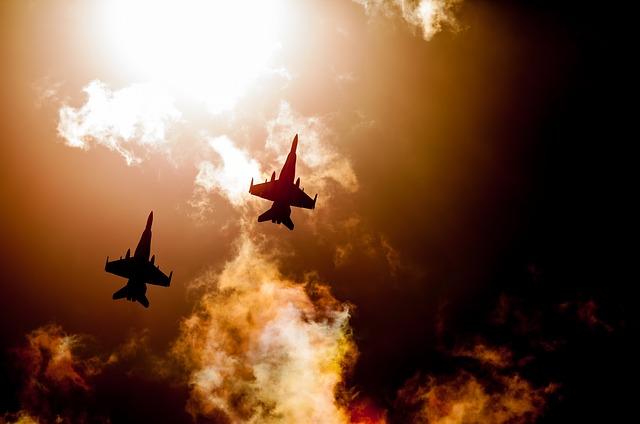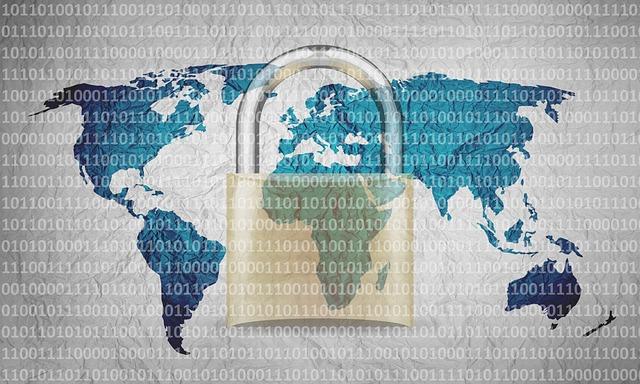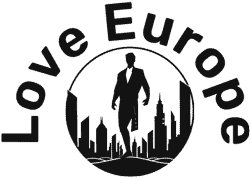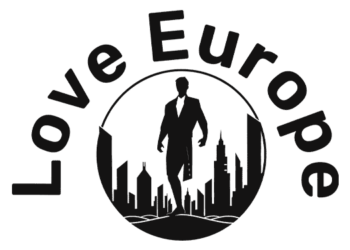Nato’s Strategic Dilemma in Response to Russian Aggression
The continued stress between NATO and russia poses a multifaceted strategic dilemma for the alliance, as it grapples with the implications of escalating army aggression from Moscow.The problem lies in balancing deterrence measures with the necessity for diplomatic engagement. With the prospect of armed battle looming, NATO should navigate a fancy panorama the place the dangers of provocation are excessive, but inaction might embolden additional Russian incursions. Key issues embrace:
the readiness of member states: Sustaining a unified army posture whereas guaranteeing that each one member nations are adequately ready to reply is vital.Useful resource allocation: Balancing protection budgets and reallocating funds in direction of army capabilities with out straining economies.Public sentiment: Gauging the help of residents in member states for potential army engagements which might considerably affect coverage selections.
NATO’s method to this predicament requires innovation and strategic foresight. The alliance should improve its capabilities in cyber warfare, intelligence sharing, and rapid-response forces, guaranteeing a strong stance with out overt aggression.A transparent articulation of pink strains,backed by a reputable menace of penalties for any violation,is crucial to discourage Russian adventurism. A possible mannequin for a profitable response might be structured as follows:
StrategyDescriptionEnhanced Ahead PresenceDeploying troops and gear in strategic areas to sign dedication.Joint Army ExercisesConducting common drills to exhibit readiness and interoperability amongst forces.Disaster response TeamsEstablishing speedy-reaction items that may be deployed to the area at brief discover.

Evaluation of Member States’ Army Readiness and Useful resource Allocation
As tensions simmer between NATO and Russia, an in-depth evaluation reveals vital deficiencies within the army readiness of member states.This scenario is exacerbated by disparities in useful resource allocation, which hinder collective protection capabilities. A notable concern is the uneven distribution of army expenditures amongst NATO nations,resulting in various ranges of preparedness. Key elements affecting readiness embrace:
Personnel Ranges: Many states face shortages in educated army personnel, which may restrict operational effectiveness.Tools Modernization: A important variety of NATO members wrestle to take care of up-to-date army gear, impacting readiness throughout heightened tensions.Joint Workouts: Insufficient joint army workout routines scale back interoperability amongst forces,highlighting gaps in strategic integration.Logistical Readiness: Challenges in logistics and provide chains can impede fast deployment of forces when conflicts come up.
To deal with these vulnerabilities,a collaborative method is important. A clear evaluation of present army belongings and capabilities will facilitate a extra cohesive technique amongst member states. Potential methods could embrace:
StrategyDescriptionIncreased FundingAllocate extra assets to protection budgets to reinforce army readiness.Unified Coaching ProgramsImplement joint coaching initiatives to enhance interoperability between forces.Intelligence SharingStrengthen intelligence collaborations to preempt threats and improve decision-making.
By tackling these challenges head-on, NATO can reinforce its defensive posture and guarantee member states are outfitted to face any potential aggression from Russia.Enhanced cooperation and proactive planning are important because the alliance navigates this more and more complicated safety panorama.

The Position of Cybersecurity in Strengthening Natos Protection Posture
In an period the place conflicts are more and more digital, enhancing NATO’s cybersecurity capabilities has turn out to be paramount to make sure strong protection methods in opposition to evolving threats, notably from adversaries equivalent to Russia.A complete method to cybersecurity encompasses not onyl technological upgrades however additionally the cultivation of a tradition that prioritizes cyber resilience. by integrating superior applied sciences and intelligence-sharing mechanisms, NATO can fortify its defenses in opposition to a variety of cyberattacks, from espionage to ransomware, thereby safeguarding its vital infrastructures and delicate particulars. Key initiatives ought to embrace:
Investing in Cyber Protection Applied sciences: Growing cutting-edge instruments that may detect and neutralize threats swiftly.Joint Cyber Workouts: Conducting common simulations to arrange member states for potential cyber crises.Data Sharing: Establishing real-time dialog channels amongst member nations to shortly alternate menace intelligence.
Furthermore, the integration of cybersecurity into NATO’s overarching protection technique should be complemented by capability constructing throughout all member states. This includes not only a concentrate on technological enhancements but additionally the empowerment of personnel by way of intensive coaching and teaching programs. As cyber threats proceed to escalate,NATO should spend money on fostering a workforce able to addressing the challenges posed by each state and non-state actors. Beneath is a desk highlighting important areas of focus for constructing a formidable cybersecurity posture:
Space of FocusDescriptionImportanceTraining & DevelopmentEnhancing expertise of cybersecurity personnel.HighThreat IntelligenceGathering knowledge on rising cyber threats.criticalPublic-Non-public PartnershipsCollaborating with non-public sector for progressive options.Important

Diplomatic Avenues: Balancing Deterrence and Dialogue with Russia
The present geopolitical panorama requires NATO to navigate the complicated interaction of deterrence and dialogue when participating with Russia. Latest escalations have prompted a reassessment of methods, revealing that a twin method could also be important for sustaining stability in Japanese Europe. This necessitates a cautious balancing act that emphasizes energy whereas remaining open to constructive dialogue. Key components of this diplomatic technique embrace:
Engagement Initiatives: set up channels for direct communication to keep away from miscalculations and improve mutual understanding.Financial Stress: Use focused sanctions to discourage aggressive conduct with out isolating Russia completely.Army Readiness: Keep a strong NATO presence as a type of deterrence whereas clarifying the circumstances beneath which army pressure could be employed.
Furthermore, NATO members have to strengthen platforms for multilateral diplomacy, facilitating discussions that deal with safety issues on either side. A collaborative method can additional reinforce the notion that dialogue shouldn’t be an indication of weak spot however quite a strategic selection for long-term peace. A sensible framework for these discussions might be illustrated as follows:
StrategyPurposePotential OutcomeDirect DialoguesPrevent miscommunicationDe-escalation of tensionsJoint Safety ExercisesBuild belief amongst partiesImproved cooperationTrack II DiplomacyEngage non-governmental actorsBroader views on points

suggestions for Enhanced Collective Protection Methods
To bolster collective protection methods amongst NATO members, a number of key initiatives ought to be prioritized. Enhanced intelligence sharing stands out as a essential factor, guaranteeing that each one member states have real-time insights into potential threats. This might contain joint coaching workout routines centered on cyber warfare and hybrid threats. Moreover, establishing everlasting bases in Japanese Europe would function a deterrent, offering a visual dedication to protection whereas permitting fast response capabilities. Reassessing present troop deployments and bolstering the fast response pressure would additional strengthen NATO’s posture in opposition to any aggressions.
A coordinated method in protection spending might foster higher resilience throughout member nations.Funding in superior applied sciences—such as synthetic intelligence, drone warfare, and missile protection methods—ought to be inspired to modernize NATO’s operational capabilities. Moreover, forging nearer ties with non-member states that share comparable safety issues can amplify deterrence methods. Common joint workout routines with nations in proximity to Russia, such as Finland and Sweden, might improve operational readiness and exhibit unity in the face of escalating tensions.

The Influence of Public Sentiment on Nato’s Armed response Choices
Public sentiment performs a pivotal function in shaping NATO’s army posture, particularly as tensions with Russia escalate. With an more and more vocal citizenry influenced by social media,the alliance faces strain to align its army methods with the values and priorities of its member nations. As public opinion shifts, NATO should navigate a complicated panorama the place the will for peace could conflict with the necessity for army readiness.Key elements affecting this sentiment embrace:
Media portrayal of conflicts and army actionsPublic notion of threats posed by RussiaAncient context and nationwide narratives surrounding NATONational politics and the affect of governmental rhetoric
The repercussions of public sentiment are additional mirrored within the decision-making processes concerning NATO’s armed response. In instances of heightened aggression, like current maneuvers by Russian forces, public approval can considerably affect the willingness of member states to have interaction militarily. Contemplate the next implications:
Public SentimentPotential Influence on NATO’s ResponseSupportive of Army ActionIncreased deployment of forcesneutral or indifferentLimited engagement and supportOpposed to Army ActionPolitical roadblocks and restricted operations
This dynamic between public opinion and army technique underscores NATO’s dilemma: to behave decisively in opposition to exterior threats whereas remaining attuned to the voices of the populace. The stakes are excessive, because the alliance’s effectiveness hinges not solely on its army capabilities however additionally on sustaining the belief and help of its members’ residents.
Concluding Remarks
NATO’s vulnerabilities within the face of heightened tensions with Russia can’t be understated. As the alliance grapples with its strategic decisions in a quickly evolving geopolitical panorama, the significance of a united entrance turns into more and more clear. The continued debate about arming member states and enhancing army preparedness displays not solely the urgency of the scenario however additionally the complexities concerned in collective protection mechanisms. As NATO weighs its choices, the stakes are larger than ever, requiring each decisive motion and cautious diplomacy.The path ahead will not solely decide the alliance’s readiness to counter potential threats however will even form the safety framework of Europe for years to return. In a world the place aggression and resilience are incessantly sufficient intertwined, the alternatives made in the present day will reverberate nicely into the long run.
Source link : https://europ.info/2025/03/01/aland-islands-2/natos-weak-spot-against-russia-facing-a-choice-to-take-up-arms-the-times/
Creator : Atticus Reed
Publish date : 2025-03-01 23:03:00
Copyright for syndicated content material belongs to the linked Source.


